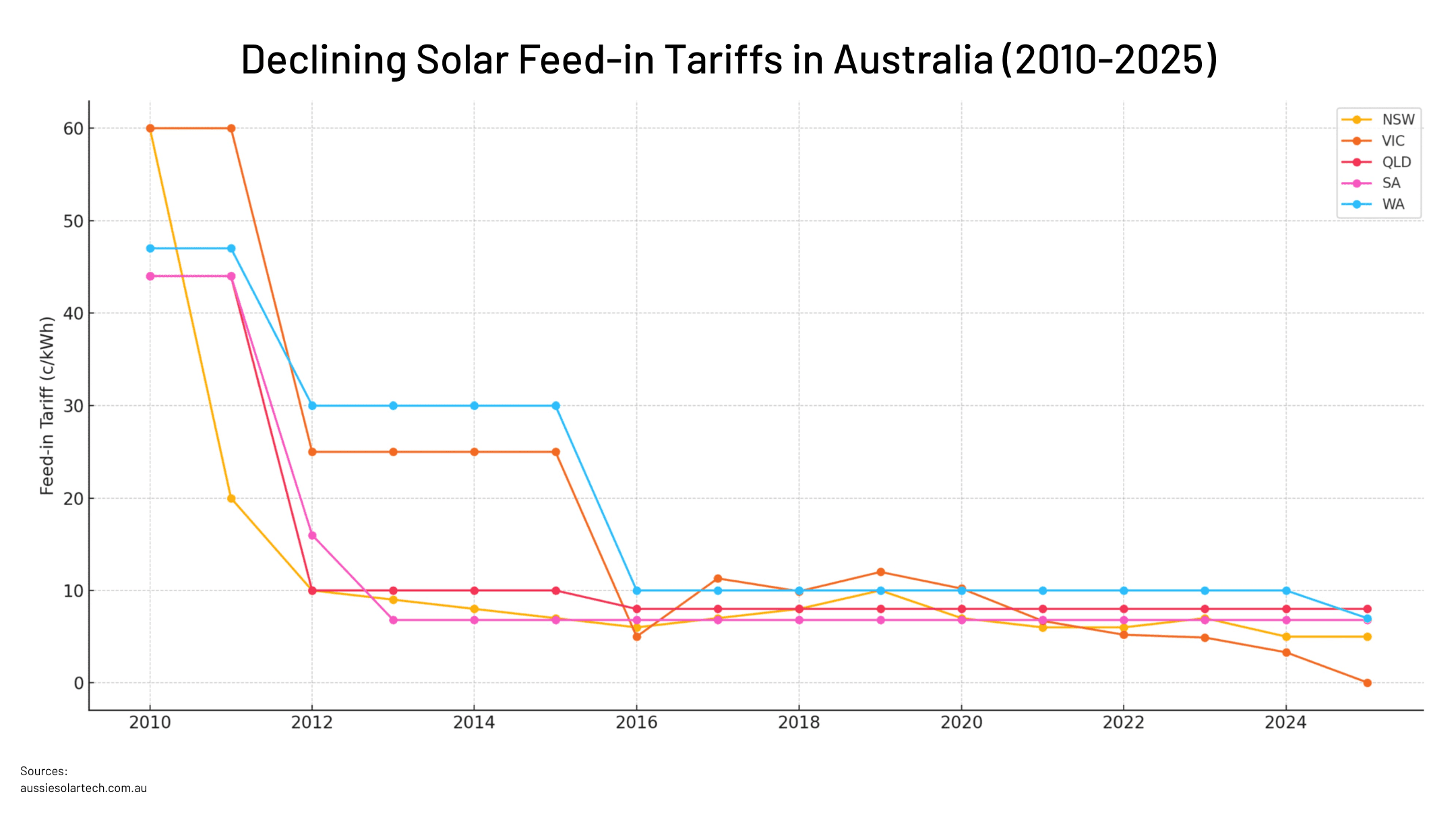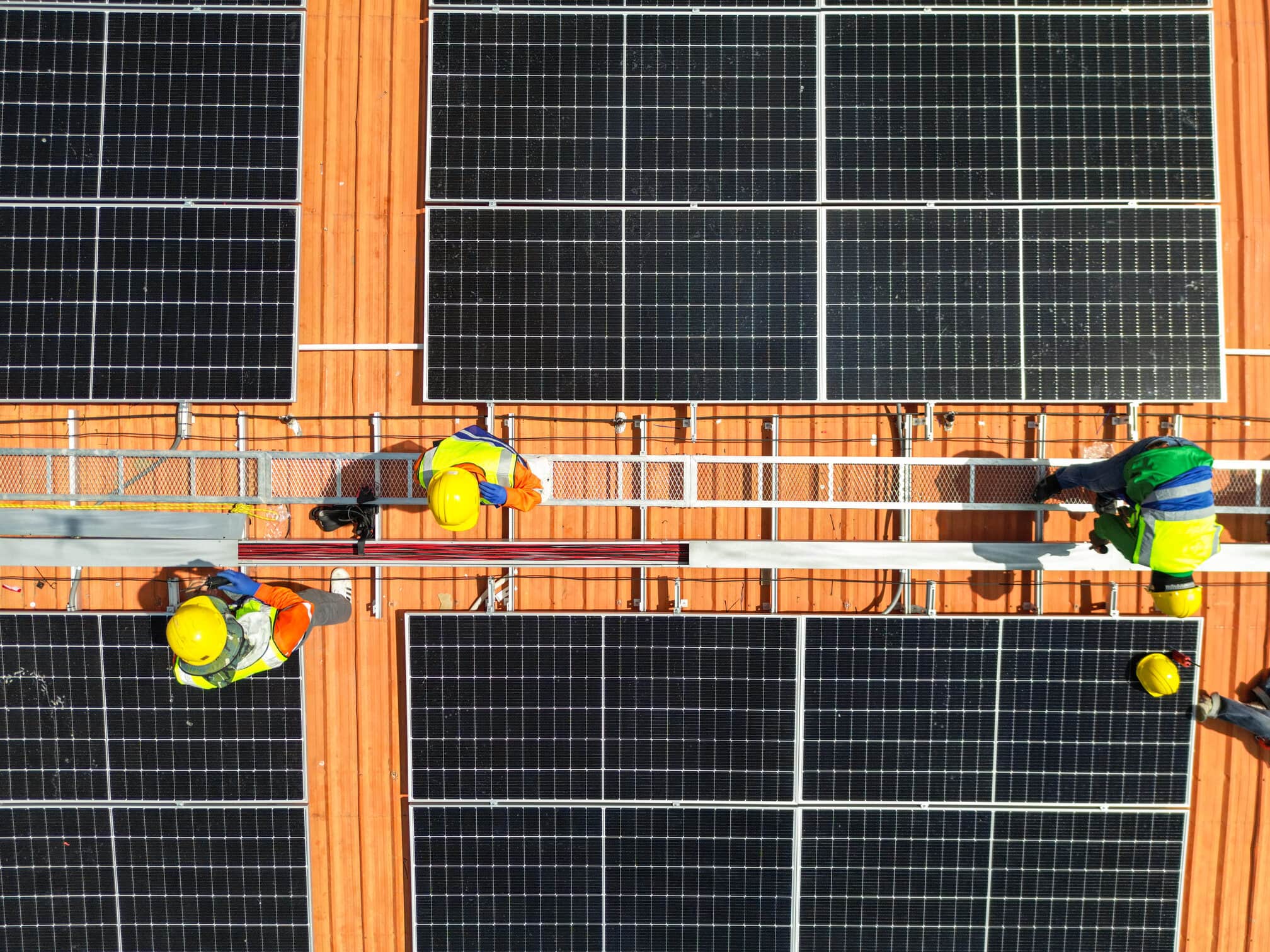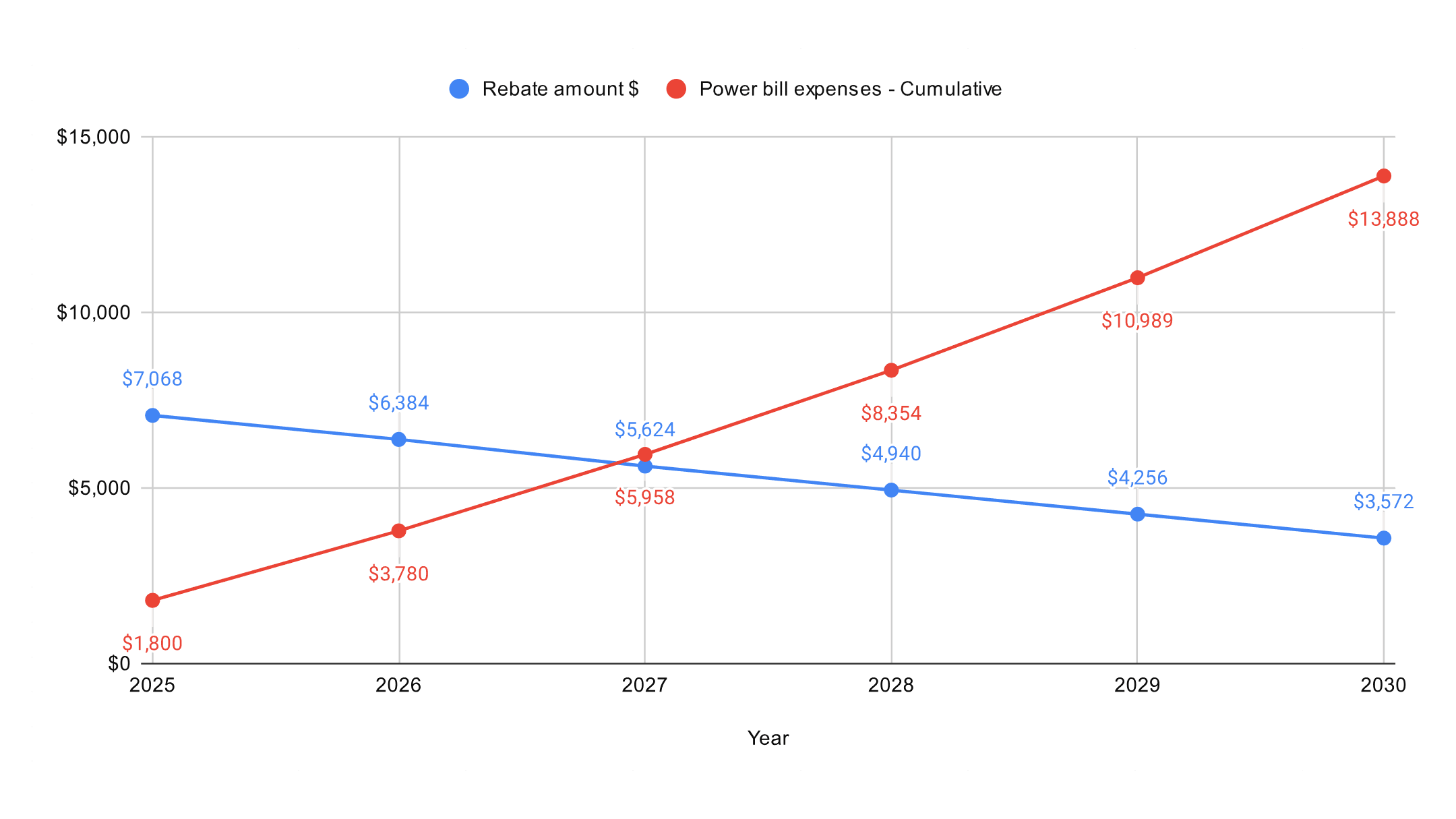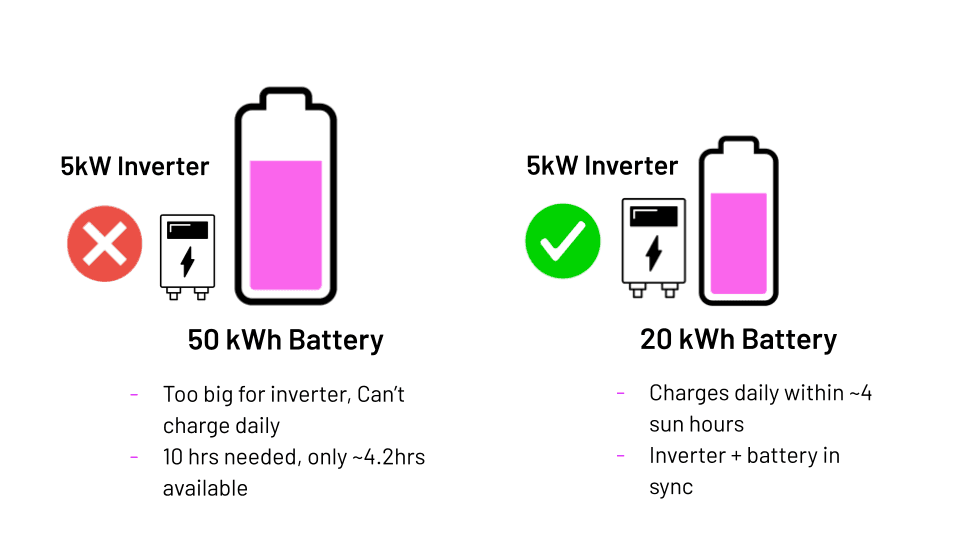

Solar & Battery Rebates, Incentives And Finance Explained
If you feel like you are hearing about solar, home batteries and energy rebates everywhere, you are not imagining it. Australia’s grid is under pressure, and households like yours are a big part of the solution.
In this article, we turn our recent 1KOMMA5° webinar, “How to Get Solar & Batteries Cheaper with Incentives, Rebates & Finance”, into a clear, easy to follow guide so you can understand what rebates you can access, how the incentives work, and how finance can help you get started sooner.
Key Takeaways:
The grid is under pressure, and solar plus batteries at the home level are a key part of the solution
Federal STCs and the Cheaper Home Batteries Program significantly reduce upfront costs, but they step down every year
State based schemes and VPPs can add extra value on top
Green finance can turn your existing power bill into repayments on your own energy system, often with better cash flow from day one
The right system size, inverter pairing and charging strategy make all the difference to your long term savings
If you’d like to watch the webinar, you can check out the replay below, otherwise we’ve turned the full session into the article below so you can read through it at your own pace.
How Australia’s energy market actually works
The grid is under pressure, and you are part of the solution.
Most power bills make it look like you pay a simple flat rate. In the background, it is very different. Australia runs on a wholesale energy market where prices move up and down every five minutes based on supply and demand.
When demand is high and there is not enough generation online, wholesale prices spike. When there is more solar than the grid needs in the middle of the day, prices can fall to almost zero, or even go negative.
As you can see in the Wholesale Energy Problem image below, the well known duck curve shows how rooftop solar pushes daytime demand down, then demand spikes again in the evening when the sun goes down and everyone gets home.

The duck curve, and why daytime power is getting cheaper
The chart above shows the middle of the day, often called the “belly” of the duck, when solar generation is at its highest. As a result, many households with solar systems buy little to no electricity, which causes wholesale prices to drop significantly. On the right side of the same graphic, you see the average spot price climbing again, with much higher prices during the morning and evening peaks. These are the times when coal and gas plants need to ramp up and the grid is under the most pressure, making power more expensive.
Why feed in tariffs are falling fast
For years, one of the big drawcards for solar was generous feed in tariffs. Early customers were getting around 60c per kilowatt hour for energy they exported back to the grid.
Those days are gone. As more solar has been added, daytime power on the wholesale market has become very cheap. Retailers can no longer afford to pay high rates for exports when they can buy power cheaply elsewhere.
The chart below shows how average feed in tariffs have fallen into the low single digits in most states, with some Victorian offers now close to zero.

This changes the game. The value is no longer in selling power back to the grid. It is in using more of your own solar, and storing the excess in a battery so you buy less from the grid at peak times.

Why the government offers incentives for solar and batteries, not just grid upgrades
You might reasonably wonder, “If the grid is the problem, why not just fix the grid?” The reality is that upgrading the national network, building new large-scale renewable plants, expanding transmission lines, and securing approvals, costs tens of billions of dollars and can take years or even decades.
In contrast, rooftop solar and home batteries can be installed within weeks, right at the point of use, immediately easing pressure on the grid. Large centralised upgrades are slow and expensive, while decentralised solar and battery systems are fast, practical, and relieve strain on an ageing network.
This is why the federal government offers rebates for solar and batteries, and why many states layer additional incentives on top.
Rebates and incentives for solar and batteries in 2025
At the core of Australia’s federal incentives for solar and batteries is the Small-scale Renewable Energy Scheme (SRES), which awards Small-scale Technology Certificates (STCs) to eligible systems. Each certificate has a monetary value, and the number of STCs you receive depends on factors such as your system size, your location, and how many years remain in the scheme.
Installers like 1KOMMA5° manage the entire process behind the scenes and simply apply the value of your STCs as an upfront discount on your quote, making the incentive easy and immediate for homeowners.
Solar STCs, the original rebate
Solar STCs have been running in various forms since around 2011. There is no fixed dollar “cap”, as the scheme is funded by energy companies that are required to buy certificates.
What matters to you is that the number of STCs you receive falls every year until 2030. That means the upfront rebate for solar gets smaller over time. On the webinar, Grant showed how the solar rebate for a typical system has already dropped by more than half over the last five years.
The Cheaper Home Batteries Program, the new battery rebate
On 1 July 2025, the federal government launched the Cheaper Home Batteries Program, which extends the STC framework to home batteries.
Here’s a quick recap of the program:
Funded with $2.3 billion in support
Designed to cover up to around 30% of the cost of an eligible battery system
Applies to battery systems between 5 and 100 kWh, with the rebate capped at 50 kWh of storage
Runs on the same “stepping down” schedule as solar STCs, with yearly reductions to 2030
From 1 January 2026, the STC factor for batteries drops by around 10% from 9.3 to 8.4 per kWh, this means a typical 27 kWh battery loses close to $1,000 in federal support between 2025 and 2026. Combined solar and battery installs can see total rebates fall by roughly $1,400 for the same system.

How much support can you expect from federal rebates for solar and batteries
The exact amount you receive will vary depending on your system and location, but the key point is that larger systems (within the scheme limits) generate a bigger rebate, and installing sooner means you receive more STCs.
For example, the STC rebate for a 20 kWh battery drops each year, roughly a $3,500 reduction if you wait five years. Over that same period, you could also spend around $14,000 more on grid electricity, assuming an annual bill of $1,800 with 10% yearly increases.
In short, waiting for a “better time” often ends up costing more both upfront and in ongoing power bills.

State based incentives and virtual power plant extras
Beyond the federal rebates, each state and territory offers its own mix of incentives for solar and batteries, creating a patchwork of additional support programs. These can include feed-in tariffs that sit above wholesale electricity prices, low-interest or interest-free loans to help reduce upfront costs, virtual power plant (VPP) sign-up bonuses, and targeted schemes designed specifically for apartments, renters, or social housing.
The table below outlines what’s currently available across Australia, but these programs evolve regularly as governments update their energy strategies. Because of this, the most reliable way to understand what you’re eligible for is to speak with one of our specialists, who stays across every change and can guide you through the incentives that apply in your area.
| National | NSW | QLD | VIC | ACT | SA | NT | TAS | WA |
|---|---|---|---|---|---|---|---|---|
| Cheaper Home Batteries Program | Solar for Apartment Residents Grant | Solar Feed-In Tariff - QLD | Solar Homes Program | Sustainable Household Scheme | South Australia's Virtual Power Plant | Solar for Multi Dwellings Scheme | Solar Feed-In Tariff - TAS | WA Residential Battery Scheme |
| Federal Solar Rebate (via STCs) | NSW Virtual Power Plant Incentive | Solar for Apartments Program | Home Energy Support Rebates for Homeowners | Sustainability Incentives Scheme (City of Adelaide) | Solar Feed-In Tariff - NT | Distributed Energy Buyback Scheme | ||
| Household Energy Upgrades Fund | How Water Rebate (Solar Hot Water) | Heating and Cooling Upgrade Program | Retailer Energy Productivity Scheme (REPS) | Switch Your Thinking Incentives | ||||
| No Interest Loan Scheme (NILS) | Commercial and Industrial Solar Panel (PV) Discount | |||||||
| Solar Feed-In Tariff - VIC |

Why waiting usually costs you more every year
Between falling STC factors, rising energy bills and a finite federal funding pool, the cost of waiting is real.
As reported by the Department of Climate Change, Energy, the Environment and Water in late October 2025, more than 100,000 batteries had already been installed under the Cheaper Home Batteries Program. Every installation draws from the same $2.3 billion pool.
When you combine that rush with installer shortages, you start to see why acting earlier typically means:
Higher rebates locked in
Shorter wait times for installation
More years of savings on your side of the ledger
Financing for solar and batteries, making it affordable
You are already on a “payment plan” with your energy retailer
Many people hesitate because they don’t want to take on another loan, but the reality is that if you’re already paying an energy bill each month or quarter, you’re essentially on a never-ending payment plan: you use the power first, get the bill later, and keep paying indefinitely, without building equity or seeing a tangible return.
Solar and batteries turn this around. Instead of sending your money to the grid, you redirect what you’re already spending on energy into an asset that reduces your bills for years to come.
The graphic below shows three scenarios:
Before solar, all money goes to your energy retailer
With solar on finance, part of that money goes to a loan repayment, part to a much smaller bill
Once the system is paid off, the bulk of that money stays in your pocket as savings
How solar finance actually works
Most 1KOMMA5° customers who use financing for solar and batteries choose green energy loans that are quite different to a typical personal loan:
Zero deposit for most customers
Fixed monthly repayments, which are often similar to or lower than your current bill
5 to 10 year terms, not 20 or 30 years like a mortgage
No penalties for paying it off early
The loan is linked to your system, not your house title
Many options are backed by government green finance initiatives
You can absolutely pay cash if you prefer. That is usually the cheapest option overall. Finance simply gives you a way to start saving sooner, even if you do not have the capital sitting in the bank today.
Solar loan vs energy bill, a simple comparison
If you stick with your retailer:
You pay around $2,000 a year for power (based on a $500 quarterly bill)
Bills typically rise 5 to 10% a year, and sometimes more
There is no end point, you pay as long as you live in the home
If you switch to solar and batteries on finance:
You might have a monthly repayment of around $210
Your remaining bill could fall to around $50
Your total energy spend can drop from day one
After roughly 7 to 8 years, the system has “paid for itself” within its 12 year warranty period and you keep saving after that
Every home is different, but many households find they are cash flow neutral or cash flow positive from day one.
Green finance partners 1KOMMA5° works with
To make the process smoother, 1KOMMA5° partners with specialist green finance providers such as Plenti and Brighte. Their products are:
Designed specifically for solar, batteries and energy upgrades
Available to a wide range of customers, including joint applicants and self employed
Linked to government initiatives like the Clean Energy Finance Corporation and the Home Energy Upgrades Fund
You get access to competitive fixed rates, fast approvals and loan structures that are built around energy savings, not lifestyle spending.
Getting your system size right
There is no one size fits all solution. In the webinar, Grant shared five key questions that guide your battery design:
How much energy do you use each day on average?
How much solar or cheap grid power is available to charge the battery?
How independent do you want to be from the grid?
How deep can the battery safely discharge without shortening its life?
What is your budget, once rebates and finance are factored in?
A good solar specialist will look at at least twelve months of your usage, your roof space, your future plans and local rebates before recommending a size.
Option 1, cover your daily use
A practical approach is to size your battery to roughly match your average daily energy use, with a small buffer.
In this setup, the battery typically empties overnight and recharges during the day from your solar panels, helping to minimise electricity imports from the grid, particularly during the evening peak.
This strategy provides a solid starting point for many homes, keeping upfront costs manageable while still delivering meaningful energy savings.
Option 2, go bigger for flexibility, protection and trading
More and more households are choosing larger systems while solar and battery rebates are at their most generous.
A bigger battery can support virtual power plant participation or wholesale energy plans, allowing you to earn by discharging at peak times, keep more of your home running during blackouts or extreme weather, and provide additional capacity as your energy needs grow with EVs, pools, air conditioning, or home offices.
Under the Cheaper Home Batteries Program, you can claim rebates on up to 50 kWh of storage, a very large capacity for a residential system. Even if you don’t go that big, opting for a slightly larger battery today can offer greater flexibility and future-proof your home energy setup.

Why inverter size matters more than most people realise
A common trap in the current market is pairing a very large battery with a very small inverter to chase the maximum rebate.
Your inverter is the “tap” between your solar, battery and home. It controls how quickly your battery can charge and how much power it can deliver to your home at once
On the image below we compare a 50 kWh battery with a 5 kW inverter and a 20 kWh battery with the same 5 kW inverter.
With the larger battery, you would need around 10 hours of perfect sunshine just to fully charge it, but most locations only get about 4.2 usable solar hours per day on average. In reality, that giant battery may never fully charge or discharge.
With the 20 kWh battery, you can comfortably charge within those 4 or so hours, meaning you actually use what you paid for.
The lesson is simple, and the image spells it out, pairing a battery and inverter properly is more important than chasing the biggest headline battery size.

Can you charge your battery every day?
Finally, you need a clear plan for how the battery will charge, especially in winter or on cloudy days. The image below highlights two main sources:
Excess solar during the day
Cheap grid energy, for example overnight or during “free power” windows on certain wholesale linked plans
A well designed system will:
Use solar first wherever possible
Top up from the grid at cheap times if needed
Avoid charging from the grid at peak rates
This is where smart software, good system design and the right energy plan work together.
How 1KOMMA5° helps you make the most of rebates, incentives and finance
When you book a quote or consultation with 1KOMMA5°, you’re not just receiving a hardware price, you’re getting a personalised home energy plan.
During the discussion, your specialist will review your recent power bills and any upcoming changes like EV charging or a new pool, assess your roof layout and shading, and explain exactly which solar and battery rebates or incentives apply at your address.
They’ll also help you decide whether finance is a good fit and talk through your preferences around grid independence, virtual power plants and wholesale energy plans.
The aim is simple: to give you a clear, honest picture of your options so you feel confident, informed and supported, never pressured.

Avoiding common traps in the current rush for batteries
While strong rebates make solar and batteries more accessible, there are also some offers that deserve caution.
In the webinar Q&A, Grant highlighted a few red flags to watch for: quotes where the rebate appears to cover more than 30% of the system cost, oversized batteries paired with undersized inverters, companies with limited track records or unclear warranties, and promises that sound too good to be true.
High-quality systems aren’t “cheap,” and “cheap” systems are rarely reliable. Programs like the Cheaper Home Batteries Program are designed to make quality systems more affordable, not to push prices to rock bottom.
1KOMMA5° has been operating across Australia for years, with local teams on the East Coast and in South Australia, focusing on premium hardware, expert installation, and long-term support to ensure your system performs reliably for years to come.
Webinar replay and next steps
If you would like to dive deeper, you can:
Watch the full webinar replay of “How to Get Solar & Batteries Cheaper with Incentives, Rebates & Finance”
Explore our other educational sessions on battery sizing, energy plans and grid stability
Conclusion
If you take one thing away from this guide, make it this, the current mix of rebates for solar and batteries, incentives for solar and batteries and smart financing for solar and batteries is designed to help you move quickly, not to reward waiting.
If you are ready to see what this could look like for your home, the simplest next step is to get tailored numbers.
👉 To find out which rebates and incentives you are eligible for, and how financing for solar and batteries could work for your home, fill out our quick quote form below.

1KOMMA5° Blog
Need more information?
Head over to the 1KOMMA5° blog for more helpful tips and other important guides on everything solar, from inverters, panels and batteries to how to make the most of your investment for years to come.
Download Our Free Solar Power Guide
Get all the right information before installing a solar power system for your home.
Learn about how you can reduce your power bills, available government rebates, how to select the right system for you and of course, how to get the most out of your solar.

Frequently Asked Questions about Installing Solar Power
Are there any rebates available?
There are great government rebates/incentives still in place for eligible households. Basically, the larger the panel array, the more STCs your solar system generates as it is based on the expected output of the system over time.
When you buy a solar system, the purchase price is normally reduced by the value of the STCs created by your system. You simply fill out a form on the day of installation to confirm that the system has been installed, and that’s it. There is no additional paperwork that you need to do.
Small-scale Technology Certificates (STCs)
Small-scale Technology Certificates (STC’s) – previously known as Renewable Energy Certificates or RECS – are created when a Renewable Energy System such as a Solar PV system is installed.
The number of STC’s depends on the predicted amount of energy generated and hence the larger the system the greater the rebate. In essence, one STC is created for every megawatt-hour of production capacity of the system.
This is further multiplied by the number of years the system is likely to generate energy (for home solar systems, this is usually 15 years, although the life of the solar panels themselves is considerably more than that).
This incentive program is being phased out until 2030, so each year the number of certificates your system is eligible for reduces.
STC Price
The system for trading and pricing STCs for small systems is managed by the Small-scale Renewable Energy Scheme (SRES).
STCs are bought by Liable Parties (usually electricity retailers) and must be surrendered at the end of each quarter. As the number of STCs that are required to be surrendered is a fixed amount each year, but the number of STCs created is variable, the price paid for STCs also varies and is determined by supply and demand.
The Federal Government legislated in 2010 a fixed price for STCs by implementing a Clearing House system where STCs can be bought and sold for $40. However, there is no requirement for Liable Parties to purchase from the Clearing House, so they are likely to only do so if there is a shortage of STCs or the market price exceeds $40. There is currently a surplus of STCs in the market which means the market price of STC’s below $40
How does the feed-in tariff work?
The Feed In Tariff is only something you need to worry about if you don’t have battery storage.
The price your chosen energy retailer pays for any excess electricity generated from your solar panels is recorded as a credit on your power bill.
In NSW, solar power is fed into your home as it is generated and your household will use it first before you draw power from the grid.
This means that for every kWh of solar power used in the home you are directly saving money you’d spend on your power bill. This reduction in your power bill is the main financial benefit of solar power.
Everything else will be bought up at an agreed rate by your electricity retailer.
At the moment, most feed-in tariffs are between 5 and 10 cents per kWh, with many being about 7 cents. They bounce up and down a lot, for example in previous years they have been up over 20 cents per kWh. Typically, they are always at least 5 cents per kWh.
What happens once I sign the paperwork?
Once you sign up for a 1KOMMA5° Installation, we immediately submit your grid application to the relevant energy distributor. For systems up to 5kWs, this is a formality. For larger systems it can take a few days or more. Once we receive approval, your installation will be managed by our installation coordinator, who will welcome you to 1KOMMA5° and book an installation date for you. This is generally booked within around two weeks and installation dates are available Monday to Friday, weather permitting.
We endeavour to have your system installed within 2-4 weeks unless you request us to hold for whatever reason. Due to our strict safety policy, we do not install solar systems when it rains. In the event of inclement weather, we will rebook your installation as soon as possible. We always work with your requests as we strongly recommend that someone be home on the day of installation.
Do you offer finance?
Green Loans can be an affordable way to pay for your solar power system and is only available for approved products. As a Clean Energy Council Accredited installer, all our systems qualify.
Green Loans can be used to finance 1KOMMA5° systems from $1,000 to $30,000 over a 2-7 year term. Once you have received a referral from 1KOMMA5°, online approval usually occurs within 1-2 business days. Green Loans have a competitive fixed interest rate that is as low as 7.99% p.a.* | Comparison rate 9.21% p.a.^ Establishment fee of $299 added to the loan amount. $2.70 per week account keeping fee included in repayments.
To be eligible to apply you must:
Be over 18 years old and an Australian resident or citizen
Own or be purchasing a home
Be employed, self-employed, a self-funded retiree; or is receiving the Government Age Pension
Have an Australian driver’s license or Passport
Provide two most recent payslips or 90 days of bank statements
There are a number of good, competitive Green Loan providers – ask us about the options available.